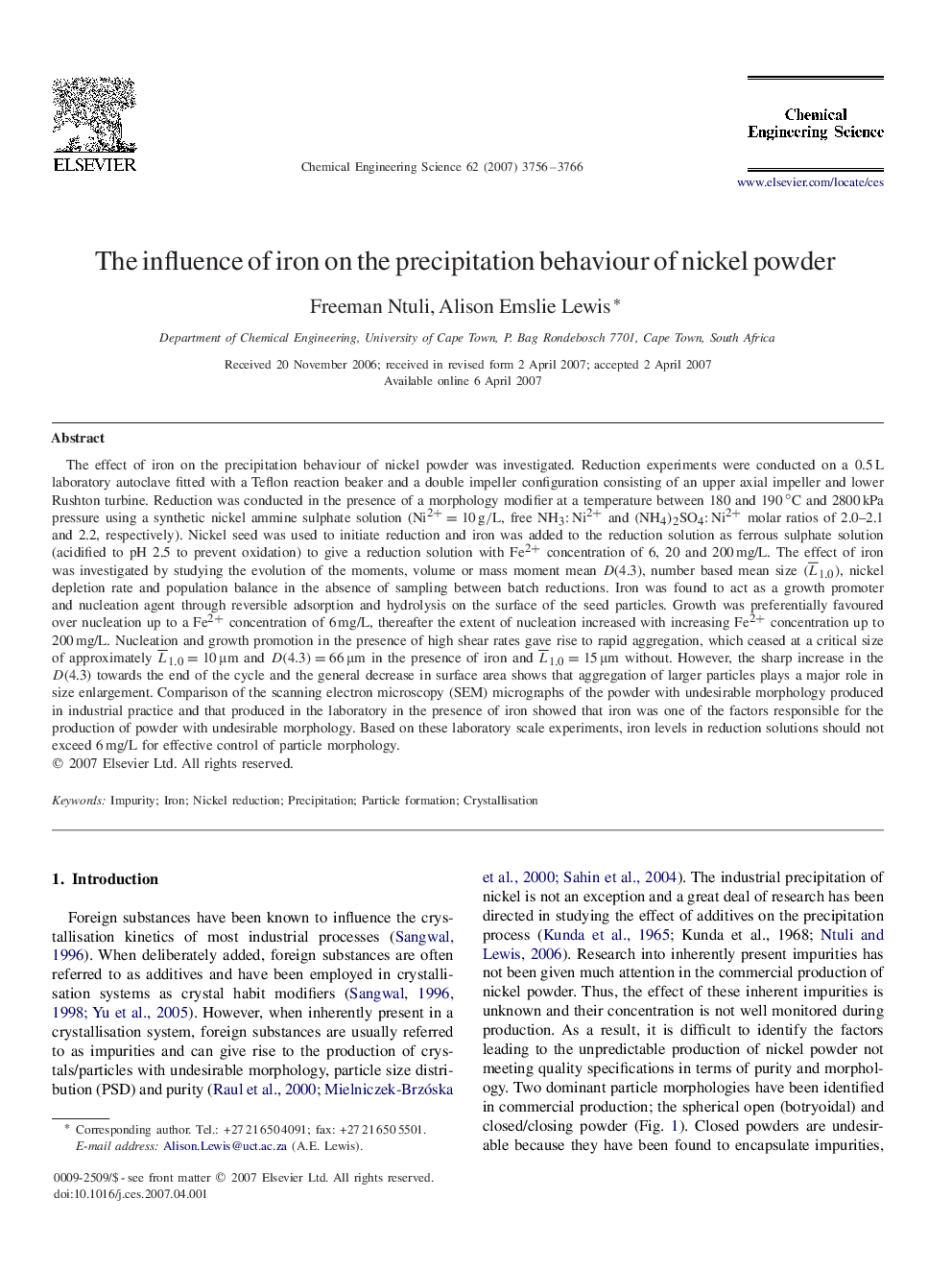| کد مقاله | کد نشریه | سال انتشار | مقاله انگلیسی | نسخه تمام متن |
|---|---|---|---|---|
| 158276 | 457002 | 2007 | 11 صفحه PDF | دانلود رایگان |

The effect of iron on the precipitation behaviour of nickel powder was investigated. Reduction experiments were conducted on a 0.5 L laboratory autoclave fitted with a Teflon reaction beaker and a double impeller configuration consisting of an upper axial impeller and lower Rushton turbine. Reduction was conducted in the presence of a morphology modifier at a temperature between 180 and 190∘C and 2800 kPa pressure using a synthetic nickel ammine sulphate solution (Ni2+=10g/L, free NH3:Ni2+NH3:Ni2+ and (NH4)2SO4:Ni2+(NH4)2SO4:Ni2+ molar ratios of 2.0–2.1 and 2.2, respectively). Nickel seed was used to initiate reduction and iron was added to the reduction solution as ferrous sulphate solution (acidified to pH 2.5 to prevent oxidation) to give a reduction solution with Fe2+Fe2+ concentration of 6, 20 and 200 mg/L. The effect of iron was investigated by studying the evolution of the moments, volume or mass moment mean DD(4.3), number based mean size (L¯1.0), nickel depletion rate and population balance in the absence of sampling between batch reductions. Iron was found to act as a growth promoter and nucleation agent through reversible adsorption and hydrolysis on the surface of the seed particles. Growth was preferentially favoured over nucleation up to a Fe2+Fe2+ concentration of 6 mg/L, thereafter the extent of nucleation increased with increasing Fe2+Fe2+ concentration up to 200 mg/L. Nucleation and growth promotion in the presence of high shear rates gave rise to rapid aggregation, which ceased at a critical size of approximately L¯1.0=10μm and D(4.3)=66μm in the presence of iron and L¯1.0=15μm without. However, the sharp increase in the DD(4.3) towards the end of the cycle and the general decrease in surface area shows that aggregation of larger particles plays a major role in size enlargement. Comparison of the scanning electron microscopy (SEM) micrographs of the powder with undesirable morphology produced in industrial practice and that produced in the laboratory in the presence of iron showed that iron was one of the factors responsible for the production of powder with undesirable morphology. Based on these laboratory scale experiments, iron levels in reduction solutions should not exceed 6 mg/L for effective control of particle morphology.
Journal: Chemical Engineering Science - Volume 62, Issue 14, July 2007, Pages 3756–3766